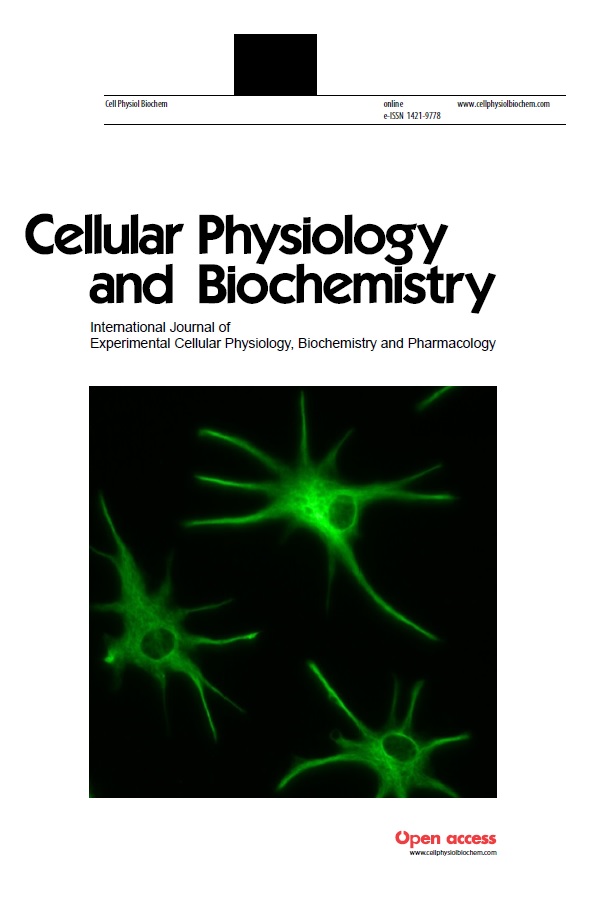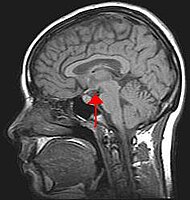
Signaling mechanisms in red blood cells: A view through the protein phosphorylation and deformability.
Sign Up to like & getrecommendations! Published in 2023 at "Journal of cellular physiology"
DOI: 10.1002/jcp.30958
Abstract: Intracellular signaling mechanisms in red blood cells (RBCs) involve various protein kinases and phosphatases and enable rapid adaptive responses to hypoxia, metabolic requirements, oxidative stress, or shear stress by regulating the physiological properties of the… read more here.
Keywords: signaling mechanisms; red blood; protein phosphorylation; deformability ... See more keywords

The regulatory and signaling mechanisms of the ASK family.
Sign Up to like & getrecommendations! Published in 2017 at "Advances in biological regulation"
DOI: 10.1016/j.jbior.2017.05.004
Abstract: Apoptosis signal-regulating kinase 1 (ASK1) was identified as a MAP3K that activates the JNK and p38 pathways, and subsequent studies have reported ASK2 and ASK3 as members of the ASK family. The ASK family is… read more here.
Keywords: ask family; regulatory signaling; family; stress ... See more keywords

TCR Signaling: Mechanisms of Initiation and Propagation.
Sign Up to like & getrecommendations! Published in 2018 at "Trends in biochemical sciences"
DOI: 10.1016/j.tibs.2017.11.008
Abstract: The mechanisms by which a T cell detects antigen using its T cell antigen receptor (TCR) are crucial to our understanding of immunity and the harnessing of T cells therapeutically. A hallmark of the T… read more here.
Keywords: tcr signaling; mechanisms initiation; signaling mechanisms; initiation propagation ... See more keywords

PRECOGx: exploring GPCR signaling mechanisms with deep protein representations
Sign Up to like & getrecommendations! Published in 2022 at "Nucleic Acids Research"
DOI: 10.1093/nar/gkac426
Abstract: Abstract In this study we show that protein language models can encode structural and functional information of GPCR sequences that can be used to predict their signaling and functional repertoire. We used the ESM1b protein… read more here.
Keywords: gpcr signaling; gpcr; signaling mechanisms; precogx exploring ... See more keywords

The Wnt Pathway: From Signaling Mechanisms to Synthetic Modulators.
Sign Up to like & getrecommendations! Published in 2022 at "Annual review of biochemistry"
DOI: 10.1146/annurev-biochem-040320-103615
Abstract: The Wnt pathway is central to a host of developmental and disease-related processes. The remarkable conservation of this intercellular signaling cascade throughout metazoan lineages indicates that it coevolved with multicellularity to regulate the generation and… read more here.
Keywords: synthetic modulators; cell; pathway signaling; signaling mechanisms ... See more keywords

Signaling Mechanisms of Myofibroblastic Activation: Outside-in and Inside-Out
Sign Up to like & getrecommendations! Published in 2018 at "Cellular Physiology and Biochemistry"
DOI: 10.1159/000493217
Abstract: Myofibroblasts are central mediators of fibrosis. Typically derived from resident fibroblasts, myofibroblasts represent a heterogeneous population of cells that are principally defined by acquired contractile function and high synthetic ability to produce extracellular matrix (ECM).… read more here.
Keywords: myofibroblastic activation; signaling mechanisms; inside signaling; activation ... See more keywords

Advances in determining signaling mechanisms of ceramide and role in disease.
Sign Up to like & getrecommendations! Published in 2019 at "Journal of lipid research"
DOI: 10.1194/jlr.s092874
Abstract: Ceramide is a critical bioactive lipid involved in diverse cellular processes. It has been proposed to regulate cellular processes by influencing membrane properties and by directly interacting with effector proteins. Advances over the past decade… read more here.
Keywords: determining signaling; signaling mechanisms; ceramide role; mechanisms ceramide ... See more keywords

The Activation and Signaling Mechanisms of GPR56/ADGRG1 in Melanoma Cell
Sign Up to like & getrecommendations! Published in 2018 at "Frontiers in Oncology"
DOI: 10.3389/fonc.2018.00304
Abstract: Adhesion G protein-coupled receptors (aGPCRs) constitute the second largest GPCR subfamily. GPR56/ADGRG1 is a member of the ADGRG subgroup of aGPCRs. Although GPR56 is best known for its pivotal role in the cerebral cortical development,… read more here.
Keywords: melanoma; gpr56 adgrg1; mechanisms gpr56; signaling mechanisms ... See more keywords

Antiatherogenic Effects of Quercetin in the THP-1 Macrophage Model In Vitro, With Insights Into Its Signaling Mechanisms Using In Silico Analysis
Sign Up to like & getrecommendations! Published in 2021 at "Frontiers in Pharmacology"
DOI: 10.3389/fphar.2021.698138
Abstract: Background: Atherosclerosis (AS), a major risk factor for stroke and brain tissue destruction, is an inflammatory disease of the blood vessels, and the underlying pathology is inflammation mediated by various chemokines and cytokines. Quercetin, a… read more here.
Keywords: mechanisms using; antiatherogenic effects; analysis; effects quercetin ... See more keywords

Signaling Mechanisms by Arabidopsis Cryptochromes
Sign Up to like & getrecommendations! Published in 2022 at "Frontiers in Plant Science"
DOI: 10.3389/fpls.2022.844714
Abstract: Cryptochromes (CRYs) are blue light photoreceptors that regulate growth, development, and metabolism in plants. In Arabidopsis thaliana (Arabidopsis), CRY1 and CRY2 possess partially redundant and overlapping functions. Upon exposure to blue light, the monomeric inactive… read more here.
Keywords: arabidopsis cryptochromes; cry; signaling mechanisms; mechanisms arabidopsis ... See more keywords

Oxytocin and Food Intake Control: Neural, Behavioral, and Signaling Mechanisms
Sign Up to like & getrecommendations! Published in 2021 at "International Journal of Molecular Sciences"
DOI: 10.3390/ijms221910859
Abstract: The neuropeptide oxytocin is produced in the paraventricular hypothalamic nucleus and the supraoptic nucleus of the hypothalamus. In addition to its extensively studied influence on social behavior and reproductive function, central oxytocin signaling potently reduces… read more here.
Keywords: mechanisms oxytocin; food intake; signaling mechanisms; behavioral signaling ... See more keywords